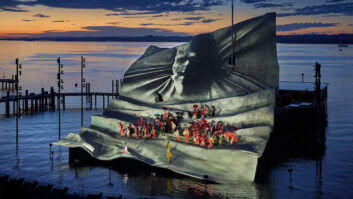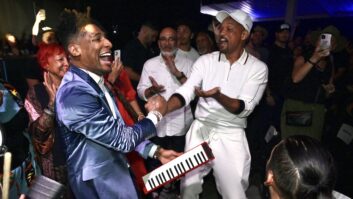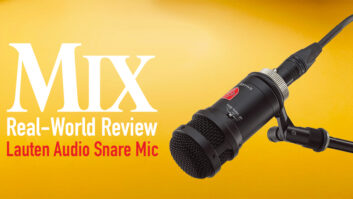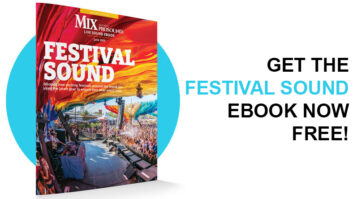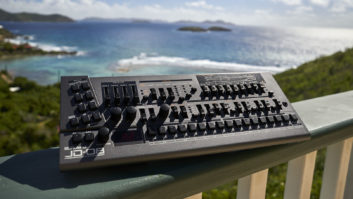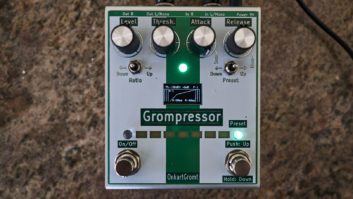Festival producers and staging companies must prepare for every possible scenario, from bad weather, to bomb scares, making a detailed safety plan the most important aspect of any festival. Wristbands on, hands in the air, lost in the music; the festival audience doesn’t care how that blissful moment came to be. It’s happening, and if the event producers and production teams have done their jobs well, it is a moment of pure magic.

All live event professionals ultimately want the same thing: to provide an outstanding experience for their guests. Being able to do so means taking into consideration hundreds, if not thousands, of potential ways in which something can go wrong. So how can you avoid them all?
“If there’s any one thing, it’s making sure we have all seven ‘Ps’ crossed off the list: Proper Pre-Planning Prevents Piss-Poor Performance,” says Ziggy Stull, production manager and audio technician for Logic Systems Sound & Lighting in St. Louis, MO.
With a big festival to work—Carolina Rebellion—the following day, it’s also probably why Stull sounds so calm on the phone: He’s ready.
COME TOGETHER BUT HOW?
One would be forgiven for taking the artists’ presence on the festival stage for granted. They have “people” that make it happen, coordinating with festival organizers to iron out details such as visas and hotels—unless they’re artists playing WOMAD, the World of Music Dance and Arts festival, in which case, this might be the first time they’ve left their home countries. Founded by Peter Gabriel in 1980, WOMAD events take place around the globe, from Australia to the UK.
Beckie Parsons, director of music festival production company, Judgeday, and Technical Production Manager of WOMAD (UK) says, “the interesting and challenging points from a world music perspective is that a lot of the artists aren’t touring, so they are flying into the UK specifically to perform at the festival—therefore they’re not touring with their own equipment a lot of the time. We have a huge backline advance, so we have to scrutinize some 80-plus technical riders to ensure we have the right guitar amps, keyboards, percussion and more on each stage.”
Britannia Row Productions Limited has been providing the sound for WOMAD since its inception. Managing director Bryan Grant says the diverse and unusual nature of many of the instruments “is why the crew actually line up (to work) for this one.”
SAFETY FIRST
“Your first consideration is getting everything in the air and working, making sure that your artist is happy and making sure the show is good. That doesn’t leave a whole lot of time to be really deeply involved in safety as you’re going through the day,” comments Jim Digby, president of the Event Safety Alliance (ESA). It’s not that live event professionals are acting irresponsibly; it’s just something that naturally happens under the pressure of an 8 o’clock showtime—something Digby and the ESA are working hard to change…and succeeding.
While speaking with Scott Carroll, senior vice president and program director of Take 1 Insurance, the list of possible safety hazards organizers need to consider seemed to have no end: traffic flow, parking, shelter for the audience. Are there enough entrances? Are there enough exits? What fire hazards are there?
However, says Carroll, when it comes to safety, the stage is “the most visual thing people think about, especially after so many of us in this industry saw the horrible videos of what took place at the Indiana State Fair and the Sugarland tragedy, which was a total stage collapse.”
The ESA was born out of a 2011 series of tragic accidents, and along with it the Event Safety Guide—a blueprint for anyone in the live events industry to follow to ensure a safe experience for everyone on and off the stage.
The Event Safety Alliance is continuously promoting the importance of safety preparation, from monitoring weather to properly setting up a stage, through the Event Safety Guide—a blueprint for anyone in the live events industry to follow to ensure a safe experience for everyone on and off the stage. BE WEATHER WARY

It might be easy to blame the weather for festival accidents, but in fact, Digby argues that the weather isn’t usually the catalyzing element in a festival tragedy.
“Having a plan in the face of bad weather is likely to prevent you from having catastrophic loss,” Digby adds. “That and having all the tools necessary to know that you’re facing a hazard.”
For Stull, that means that at the very least, there should be a functioning anemometer (wind velocity meter) onsite—and that everyone knows where it is and how to read it. “Make sure you’re interacting with people so that if and when the wind gets too high and you have to land PA, everyone knows what that magic number is. Then there’s no question; you’re just going to do it and you don’t have to dicker back and forth because everybody already knows it’s going to happen.”
SOUND IN CHECK
Before Carolina Rebellion, Stull was at a gig that was under threat of being shut down due to noise issues. The event also took place by a river, where there was a “very well-to-do community” across the river. “When you’re talking about a metal show, things get said on microphones that they don’t want their kids to hear,” Stull says.
For his events, correct PA modeling does the trick: “That’s why we have line-array systems: You put the sound where the sound belongs and not where it doesn’t. It’s a little bit of science and a few measurements.”
Traditionally, if bleed or excessive noise levels were an issue, the FOH engineer of the offending stage would be asked to turn the volume down. “If you do it like that, you easily ruin a festival show,” said Marcel Albers, director of Communications & Marketing at Ampco Flashlight Group (AFG) in Utrecht, Netherlands. “At some point, we figured it out… we have to measure everything and find out what is the specific frequency that’s affecting the other stage, or the area, or the people living two miles away.”
“You’re selling expensive tickets to 60,000 people going to a festival. When they listen to their favorite musician, they don’t want to hear the banging of all the other acts,” says Albers. “It’s not about us. It’s about the artist, the production of the festival. And, of course, the audience.”
